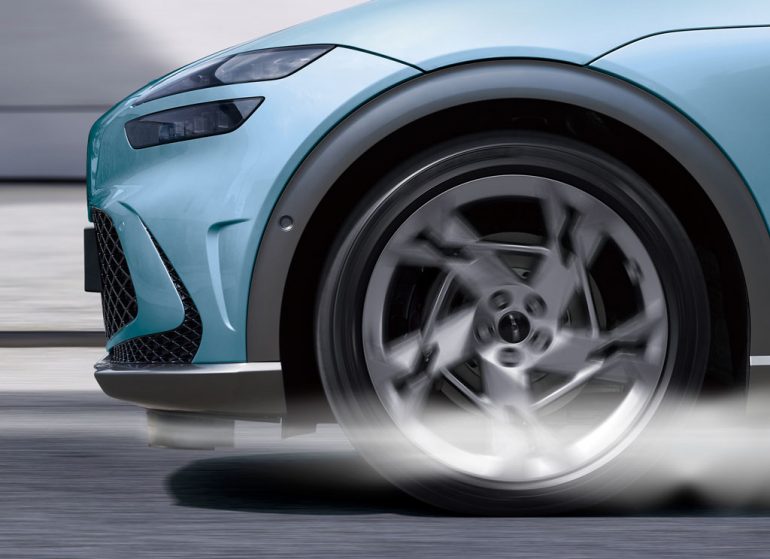
Hyundai Motor Company and Kia Corporation have introduced a groundbreaking technology called the ‘Active Air Skirt’ (AAS), designed to minimize aerodynamic resistance during high-speed driving and enhance the driving range and stability of electric vehicles (EVs). This innovative technology is positioned between the front bumper and the front wheels, remaining hidden during normal operation but coming into play at speeds over 80 km/h when aerodynamic resistance surpasses air resistance. It is then retracted at 70 km/h.
The AAS technology is specifically tailored for the E-GMP platform, focusing on the front tires without fully covering the front end. This strategic placement aims to improve aerodynamic performance, increase downforce, enhance vehicle traction, and bolster high-speed stability. The technology has undergone testing in the GV60, where it is projected to reduce the drag coefficient by 2.8 percent, thereby contributing to an extended driving range for electric vehicles.
In the electric vehicle era, the quest for an optimal driving range per charge has intensified competition among manufacturers. The relationship between vehicle design and aerodynamics has become crucial, impacting not only power performance but also driving stability and wind noise. Manufacturers are actively exploring measures to reduce the coefficient of drag (Cd), which represents air resistance acting against the vehicle’s motion.

AAS operates by controlling the airflow at the lower part of the bumper, effectively managing turbulence generated around the vehicle wheels based on varying speeds during high-speed driving. Its deployment and storage speeds (80 km/h and 70 km/h, respectively) are carefully chosen to prevent frequent operation within specific speed ranges.
The technology’s effectiveness is further demonstrated by its ability to operate at speeds exceeding 200 km/h, achieved through the application of rubber material on the lower part. This material not only minimizes the risk of external objects splashing and causing damage during high-speed driving but also ensures durability.
Hyundai Motor and Kia have reported a reduction in the drag coefficient (Cd) by 0.008, leading to a 2.8 percent improvement in drag when AAS was installed in the Genesis GV60. This improvement is estimated to result in an additional range of approximately 6 km. The companies have applied for related patents in South Korea and the United States, signaling their commitment to further development.
Sun Hyung Cho, Vice President and Head of Mobility Body Development Group at Hyundai Motor Group, emphasized that this technology is particularly impactful for SUVs, where improving aerodynamic performance is challenging. The companies are dedicated to enhancing the driving performance and stability of electric vehicles through continuous advancements in aerodynamics. Additionally, various technologies such as rear spoilers, active air flaps, wheel air curtains, wheel gap reducers, and separation traps are being employed in their vehicles to secure competitive drag coefficients. The Hyundai IONIQ 6, incorporating these technologies, has achieved a global leading Cd of 0.21.

Mike Floyd is a finance executive by trade and a car enthusiast at heart. As a CFO with a keen eye for detail and strategy, Mike brings his analytical mindset to the automotive world, uncovering fresh insights and unique perspectives that go beyond the surface. His passion for cars—especially his favorite, the Porsche 911, fuels his contributions to Automotive Addicts, where he blends a love for performance and design with his professional precision. Whether he’s breaking down industry trends or spotlighting emerging innovations, Mike helps keep the site both sharp and forward-thinking.